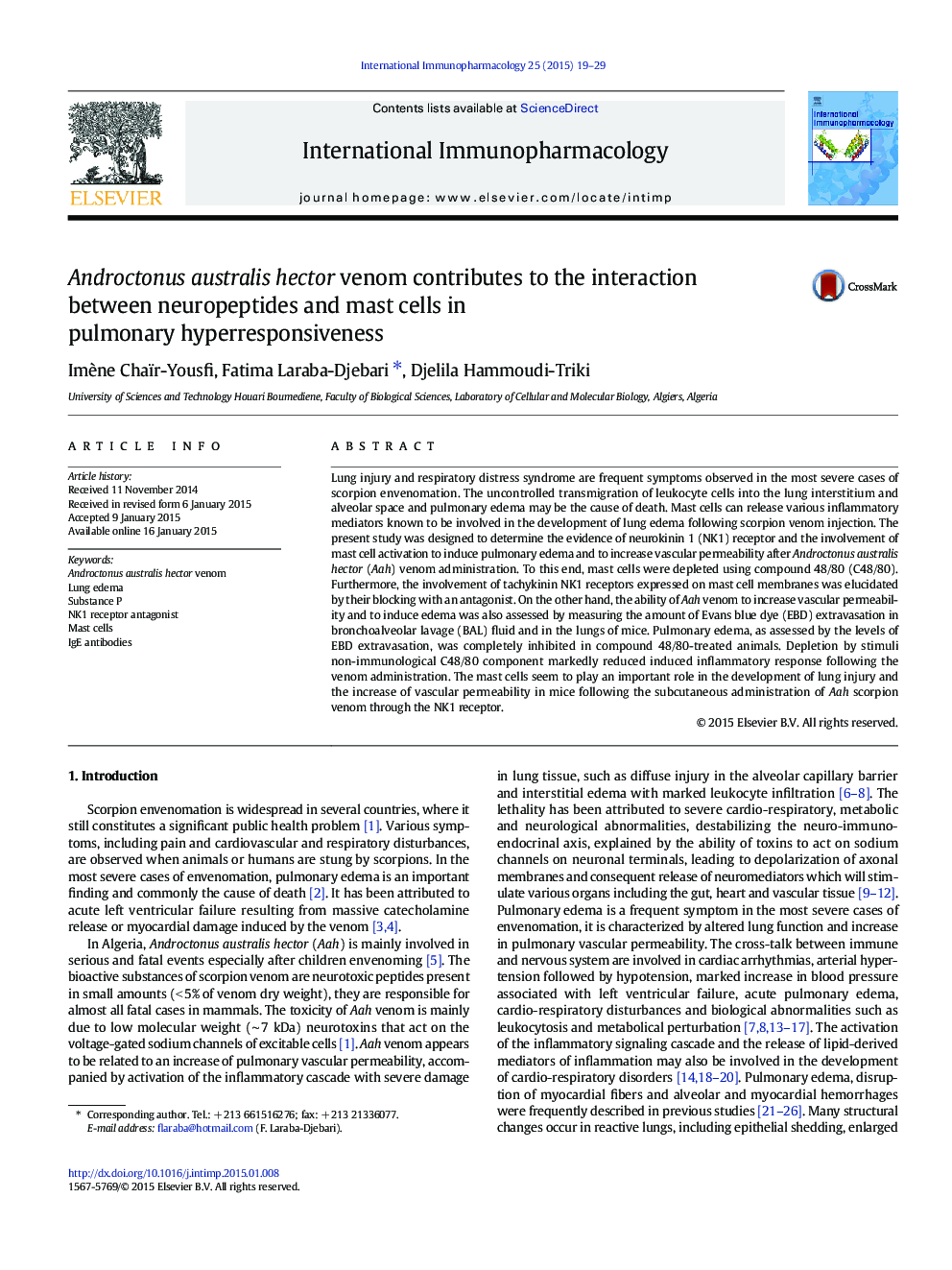| کد مقاله | کد نشریه | سال انتشار | مقاله انگلیسی | نسخه تمام متن |
|---|---|---|---|---|
| 5832363 | 1122595 | 2015 | 11 صفحه PDF | دانلود رایگان |
- Severe lung immunoreaction is observed after administration of Aah venom or its components.
- This involves multiple cell types such as eosinophils, neutrophils, lymphocytes, and macrophages.
- Mast cells seem to be an important intermediate cell type between neuropeptide release and action.
- Substance P seems to play an important role in triggering of the inflammatory cascade through neurokinin receptor (NK1).
Lung injury and respiratory distress syndrome are frequent symptoms observed in the most severe cases of scorpion envenomation. The uncontrolled transmigration of leukocyte cells into the lung interstitium and alveolar space and pulmonary edema may be the cause of death. Mast cells can release various inflammatory mediators known to be involved in the development of lung edema following scorpion venom injection. The present study was designed to determine the evidence of neurokinin 1 (NK1) receptor and the involvement of mast cell activation to induce pulmonary edema and to increase vascular permeability after Androctonus australis hector (Aah) venom administration. To this end, mast cells were depleted using compound 48/80 (C48/80). Furthermore, the involvement of tachykinin NK1 receptors expressed on mast cell membranes was elucidated by their blocking with an antagonist. On the other hand, the ability of Aah venom to increase vascular permeability and to induce edema was also assessed by measuring the amount of Evans blue dye (EBD) extravasation in bronchoalveolar lavage (BAL) fluid and in the lungs of mice. Pulmonary edema, as assessed by the levels of EBD extravasation, was completely inhibited in compound 48/80-treated animals. Depletion by stimuli non-immunological C48/80 component markedly reduced induced inflammatory response following the venom administration. The mast cells seem to play an important role in the development of lung injury and the increase of vascular permeability in mice following the subcutaneous administration of Aah scorpion venom through the NK1 receptor.
Journal: International Immunopharmacology - Volume 25, Issue 1, March 2015, Pages 19-29
